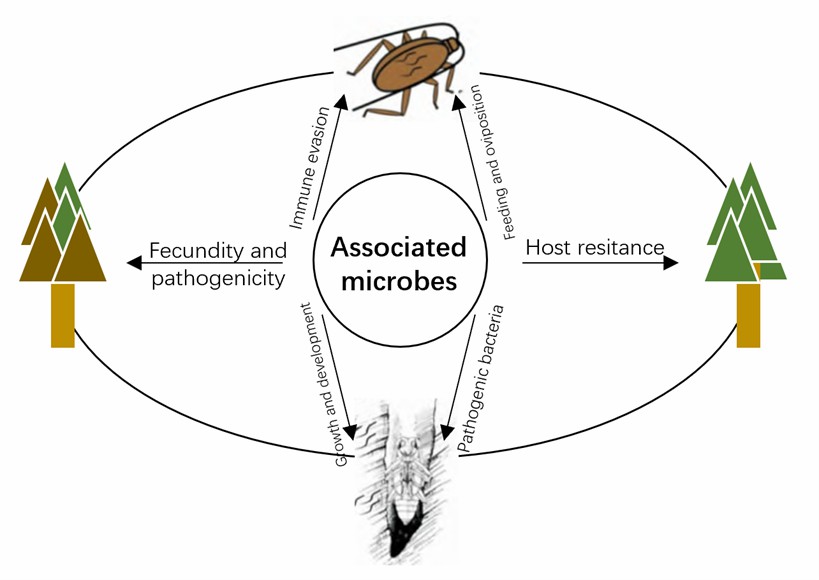There is a wide variety of nematode associated microorganisms, with three main groups, Pantoea, Pseudomonas, and Peptostreptococcus, isolated from different infected areas and from different species of diseased wood. The nematodes and the microorganisms they carry have evolved in synergy over a long time, resulting in various mutualistic relationships ranging from mutually beneficial symbiosis to antagonism. Nematode companion microorganisms can produce phytotoxins that indirectly influence the pathogenic processes of nematodes.
Lifeasible develops an advanced platform that provides customers worldwide, covering analysis services for nematode companion microorganisms that can produce plant toxins. We customize featured services according to customer needs with decades of experience in plant protection. In addition, we deliver satisfactory and reliable results and reports on time to our customers worldwide.
 Fig.1 Interaction between companion microorganisms and plant nematodes.
Fig.1 Interaction between companion microorganisms and plant nematodes.
Lifeasible offers professional services covering nematode companion microorganisms that secrete plant toxins to meet your research needs. With years of experience in plants, our advanced platforms can help our clients solve various difficulties and conduct research. If you are interested in our services or have any questions, please feel free to contact us or make an online inquiry.
Lifeasible has established a one-stop service platform for plants. In addition to obtaining customized solutions for plant genetic engineering, customers can also conduct follow-up analysis and research on plants through our analysis platform. The analytical services we provide include but are not limited to the following:
Get Latest Lifeasible News and Updates Directly to Your Inbox
Adaptive Evolutionary Mechanism of Plants
February 28, 2025
Unraveling Cotton Development: Insights from Multi-Omics Studies
February 27, 2025